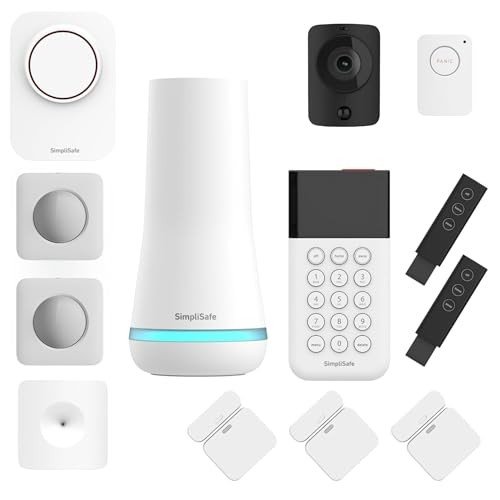How To Explain Shop Lighting UK To Your Grandparents
Shop Lighting UK: Illuminating the Retail Experience
In the ever-evolving world of retail, the significance of shop lighting can not be overstated. It not just improves the visual appeal of products however also influences consumer habits, their state of mind, and the general shopping environment. With advancements in technology and design, shop owners in the UK have a myriad of options to pick from when it emerges options. This post will check out the types of lighting readily available, their benefits, and factors to consider for producing the ideal ambiance in a retail space.
Importance of Proper Shop Lighting
Efficient shop lighting plays an important function in client experience and can considerably impact sales. Here are some essential reasons why appropriate lighting is essential for retail environments:
- Highlighting Products: Good lighting accentuates items, making them more enticing to clients.
- Producing Atmosphere: The ideal lighting can set the mood and stimulate emotions, influencing getting decisions.
- Enhancing Safety: Well-lit stores are more secure, assisting consumers navigate without risk of tripping or mishaps.
- Improving Visual Merchandising: Proper lighting can improve screens, making them lively and attractive.
Kinds Of Shop Lighting
Shop owners can pick from various types of lighting, each serving various purposes, consisting of ambient, job, accent, and decorative lighting. Here's a breakdown of each type:
Type of Lighting
Description
Best Uses
Ambient Lighting
Offers general lighting to the space.
General retail areas like boutiques and supermarkets.
Job Lighting
Focuses on specific areas to boost exposure for jobs.
Checkout counters and dressing rooms.
Accent Lighting
Highlights specific products or displays, creating a centerpiece.
Display cases, art, or advertising items.
Decorative Lighting
Adds aesthetic appeal and boosts the general design.
Chandeliers and distinct fixtures in high-end stores.
1. Ambient Lighting
Ambient lighting is the foundational lighting within a shop. It fills the entire space, making sure that consumers can see and navigate easily. Retailers need to think about using LED panels or ceiling-mounted fixtures, as they offer energy performance and excellent light distribution.
2. Task Lighting
Task lighting is crucial for areas where specific activities take place, such as checkout counters or workstations. Shop owners can install under-cabinet lighting or track lights to focus lighting on these areas, enhancing the benefit and experience for both personnel and customers.
3. Accent Lighting
Accent lighting helps accentuate specific items or functions within the store. This kind of lighting can be achieved through spotlights, track lights, or tactically put wall-mounted fixtures. It is particularly effective for showcasing included products, advertising display screens, or artwork, assisting consumer focus where it's most required.
4. Decorative Lighting
Beyond functionality, decorative lighting aspects include style and character to a retail area. Special fixtures, such as pendant lights or large chandeliers, can develop a remarkable environment, particularly in stores or high-end merchants. These statement pieces not only brighten however likewise enhance the shop's branding and aesthetic appeal.
Picking the Right Lighting for Your Shop
When picking lighting for a retail environment, shop owners must think about the following factors:
- Store Type: Different types of retail require differing lighting services. A precious jewelry store may require softer, more focused lights, while a grocery store might require brighter ambient lighting.
- Color Temperature: The color of light can impact the perception of products. Warm lights (under 3000K) produce a cozy feel, while cool lights (above 3000K) can make an area feel more contemporary.
- Energy Efficiency: The usage of LED lighting not only conserves energy but likewise reduces expenses in time.
- Flexibility: Install dimmers or adjustable fixtures to adjust lighting for different celebrations or seasonal modifications.
The Future of Shop Lighting
As technology advances, shop lighting is becoming significantly sophisticated. Here are some patterns shaping the future of retail lighting in the UK:
- Smart Lighting Solutions: Integrated technology permits for remote control and automation of lighting systems by means of smartphones or home assistants.
- Sustainable Lighting: There is a growing emphasis on environment-friendly services, with retailers going with items that reduce environmental effect.
- Centerpiece Lighting: Retailers are progressively using lighting to develop specific focal points that direct client traffic and improve item displays.
FAQs about Shop Lighting in the UK
Q: What is the very best type of lighting for a clothes store?A: A mix of
ambient and accent lighting is typically best. Ambient lighting is needed for overall presence, while accent lighting can help highlight crucial pieces or collections. Q: How can I make my shop lighting more energy-efficient? A: Consider using LED lights, installing movement sensing units, or integrating
dimmers. This reduces energy usage and costs in the long run. Q: Should I use natural light in my shop?A: Yes, making use of natural light can improve customer experience whiledecreasing energy costs. Nevertheless, it is very important to balance natural light with artificial lighting, especially on cloudy days. Q: How typically need to I replace my shop's lighting fixtures?A: This depends on the type of fixtures utilized. LED lights can last as much as 25,000 hours, while traditional bulbs****
may need to be changed more frequently. Regular maintenance checks are suggested. In a significantly competitive retail environment, shop lighting plays an invaluable role in shaping client experiences and driving sales. Lighting Store UK in the UK have a broad array of alternatives and innovations at their disposal to develop the best ambiance. By comprehending the significance of the different kinds of lighting and how to implement them effectively, shop owners can improve their space, making shopping more satisfying for consumers while increasing their bottom line. 